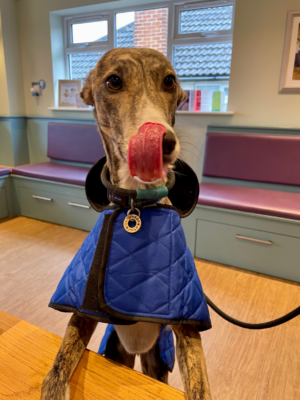Liver Disease
Liver Disease
Liver disease can envelope various diseases of the liver.
Types and some causes of liver disease:
- Hepatitis – this can be due to a toxin or infections
- Cirrhosis – this is old age or breed related changes to the liver
- Infection – this can be bacterial, viral or fungal
- Enlargement – can be due to underlying endocrine disease such as Cushings, Hyperthyroidism or Diabetes Mellitus
- Biliary disease – this is where the gallbladder or bile ducts are affected by a build up of inflammation, sludge, stones or obstructions
- Tumours – primary liver tumours are possible, but it is also a common area for metastasis
- Liver shunts – congenital or acquired
- Breed related – e.g Copper storage disease in Bedlington Terriers or Amyloidosis in Shar-pei’s
What is the function of the liver?
It has so many amazing functions:
- Metabolises fats, carbohydrates and proteins
- Stores and metabolises vitamins, minerals and glycogen
- Detoxifies the blood of harmful products
- Produces clotting agents
- Produces bile acid for digestion
Who gets it?
Any cat or dog can be affected by liver disease.
Symptoms
- Vomiting/nausea
- Diarrhoea
- Abdominal pain
- Inappetence
- Jaundice – a yellow tinge to the skin
- Excessive thirst or urination
- Neurological problems
- Clotting problems
- Ascites – fluid build up in the abdomen
Can it be prevented?
Not all can be prevented, but you can prevent infectious hepatitis and leptospirosis with vaccinations.
Diagnosis
Diagnosis is based on blood test results. A variety of changes may be noticed that may help distinguish what kind of liver disease is present.
Most obvious suggestion of liver disease is an elevation in liver enzymes (ALT/ALKP or GGT)
Bilirubin may be elevated.
Bile acids may be elevated and a ‘bile acid stimulation test’ may be necessary to establish the function of the liver.
There may be some changes to red and white blood cells.
Often imaging the liver with x-ray or ultrasound can be really helpful, for example it can identify a liver tumour or bile duct obstruction. However, for a definitive diagnosis sometimes a biopsy of the liver is necessary. This can sometimes be done via a needle through the abdominal wall, other times a biopsy through keyhole surgery is more appropriate.
Treatment
- Treatment depends on the cause
- Treatment is specific to the disease e.g. antibiotics for bacterial infection
- Some cases may need to be hospitalised for intravenous fluids for a few days
- Supportive treatment to manage symptoms e.g. anti-nausea medication and pain relief
- Liver function support supplementation e.g. containing SAMe
- Vitamin K supplementation may be necessary
- Surgical treatment to repair shunts, remove gallbladder stones, or remove a tumour
- Treat any other underlying medical disease
Dietary change
Your pet may need a specially formulated diet to support the liver function and reduce any burden on the liver. These include Royal Canin hepatic, Hill’s l/d, Purina HP Hepatic
Prognosis
Prognosis depends on the underlying cause.
For mild or moderate liver disease the damage to the organ may be reversible, the liver can regenerate very well and can recover from some insults.
However, chronic and severe liver disease has a poorer prognosis and sometimes some animals may have to be euthanised.





Find Us
Opening Hours
- Monday - Friday8:30 - 18:30
- SaturdayClosed
- SundayClosed
- Bank HolidaysClosed
Opening Hours
- Monday - Friday8:30 - 18:30
- Saturday8:30 - 14:00
- SundayClosed
- Bank HolidaysClosed
Emergencies
If you have any concerns about your pet's health while we are closed, please call our our of hours emergency providers, Medivet 24 Hour Wokingham on:
01189 790 551
Book an
appointment
We know how busy life can be. Online appointment booking available 24/7.
Book appointmentEmergencies
If you have any concerns about your pet's health while we are closed, please call our our of hours emergency providers, MiNightVet on:
0118 973 3466


